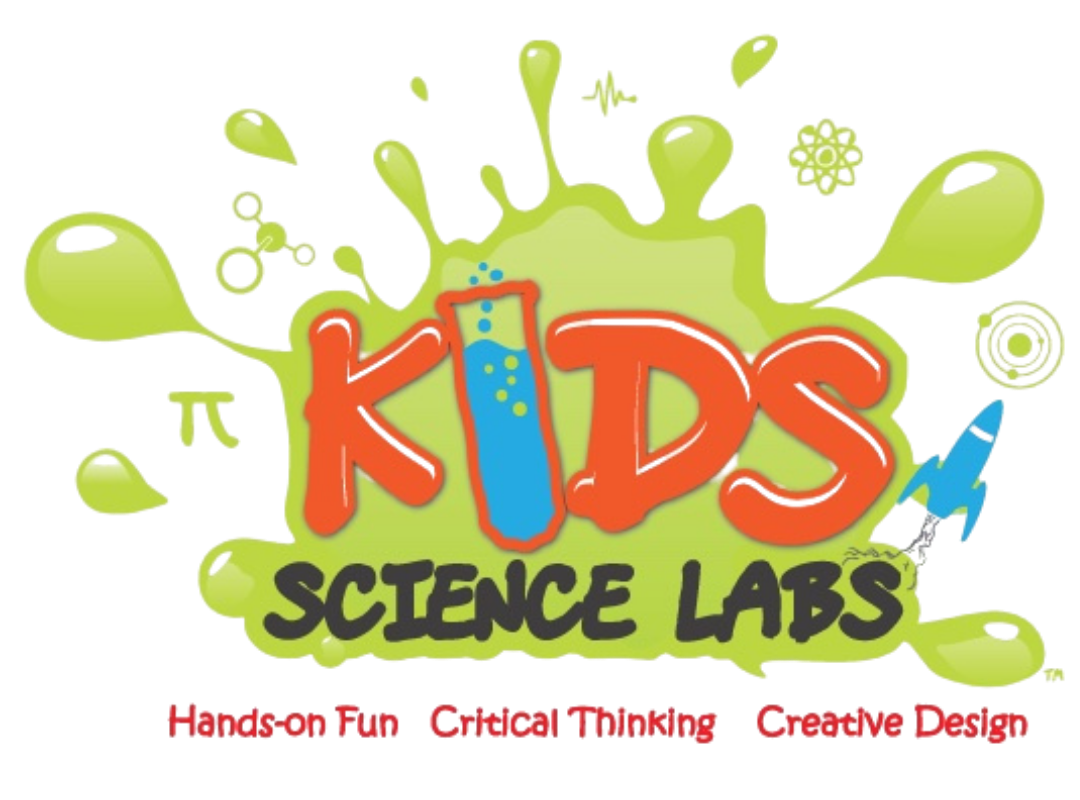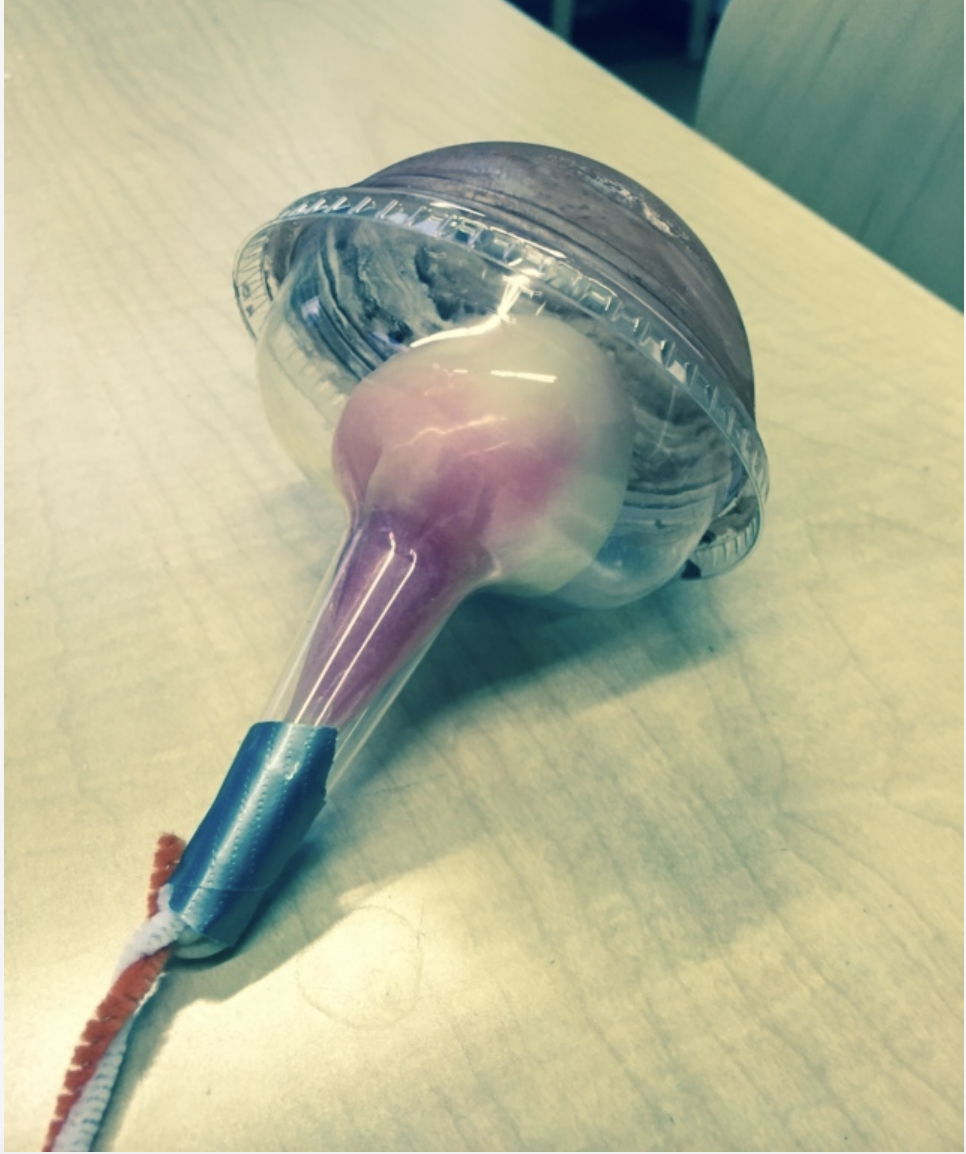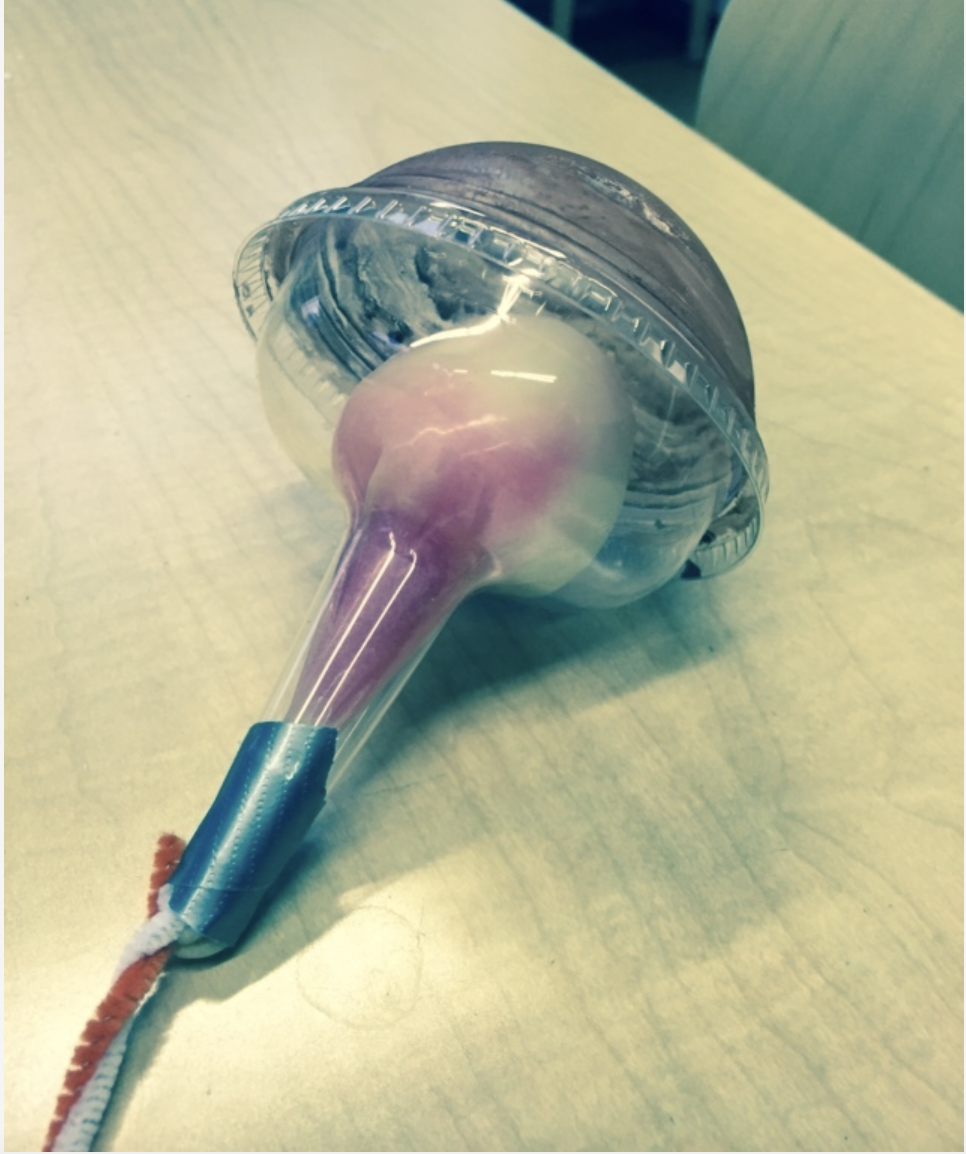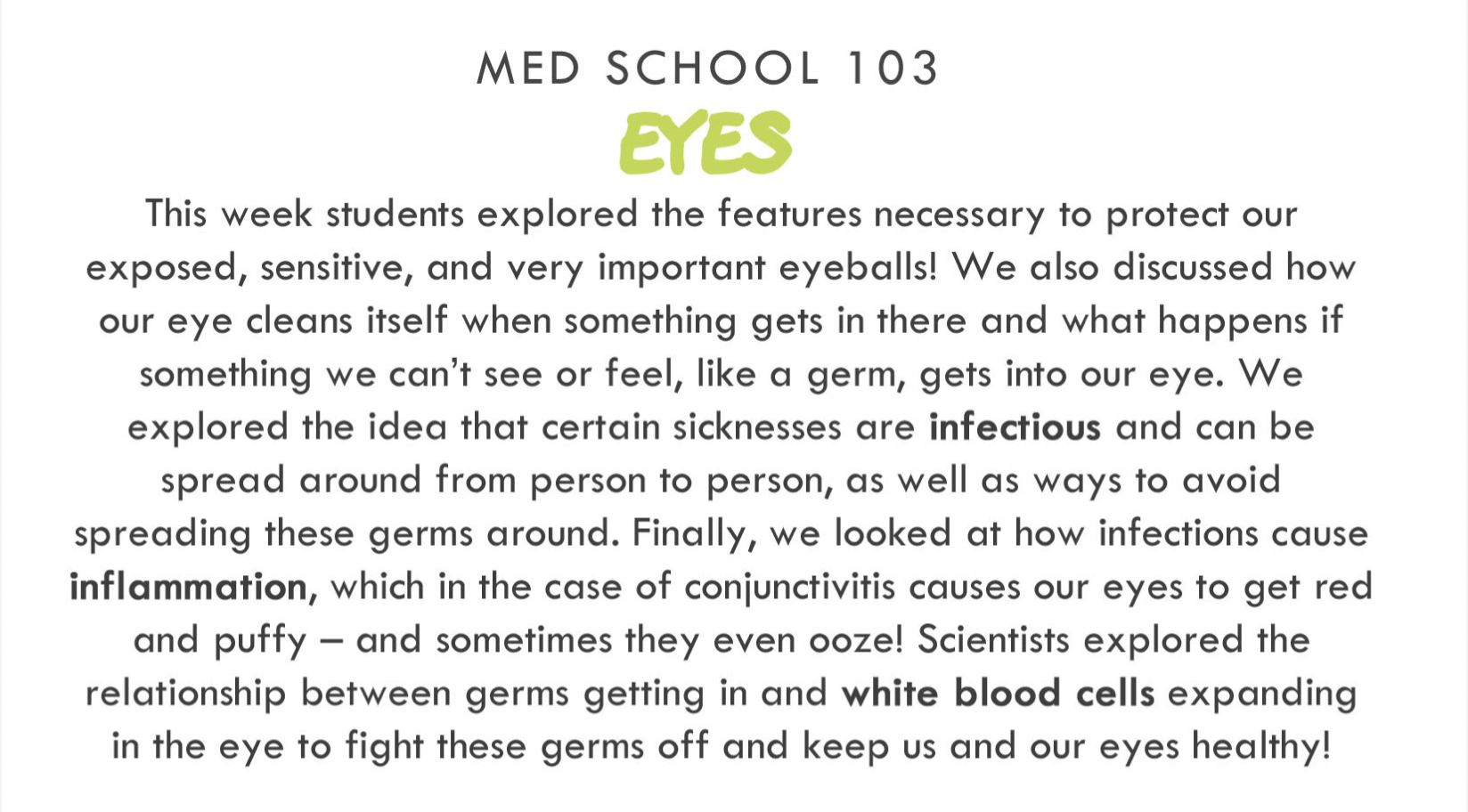Where Do Tears Come from and why do I have them when I feel crummy?
Our eyes are important and for kids, we sometimes are curious about why we blink so much, how contact lenses work, and what this thing called “pinkeye” is that we hear about in schools. At Kids Science Labs, every class starts with a curious question that motivates kids to learn through hands-on science. Today, we talked about the lens of the eye, what would happen if we didn’t ever cry, or our eyes got too dry. In one of the first experiments today at KSL, we used mirrors to actually look at our own eyes and investigate their features. if you draw a picture of a face, a child can easily tell you what’s missing, but if you draw a picture of an eyeball…often the conversation stops. We want kids to be curious about it, so we showed them their eyes to let the fun begin.
In one of our Discovery experiments today's we took a spherical gel-like ball (sodium polyacrylate) and dusted it with sand. What’s cool about this for kids is that just like our own eyeball, when kids look at the transparent ball, it inverts the image (upside down). By having students try to see through this ball when It is full of sand/dust, it becomes much more clear why our tear ducts are actively supplying water to our eyes. It also creates much more empathy for adults who are experiencing fuzzy vision or the pressure on the eye is degrading vision (glaucoma), as shown in one of our students glaucoma eye model below.
As our students thought about making their own eye model, in every age group, it provided an opportunity to connect that the eyes are actually attached to our brain via an optic nerve. You may find your student at home with an eye model that includes tear ducts, optic nerves, cornea, eye lashes, and even supporting structures to enhance the eye’s protection as we teach kids to innovate to make things better. We even saw one class design specialty lenses to augment reality on their eyes. We love science at KSL and the paths it leads to in the future.
If you love today’s lesson, like our blog too. We will keep inspiring your child with outstanding hands-on science that feeds their curiosity in Med School for Kids.







